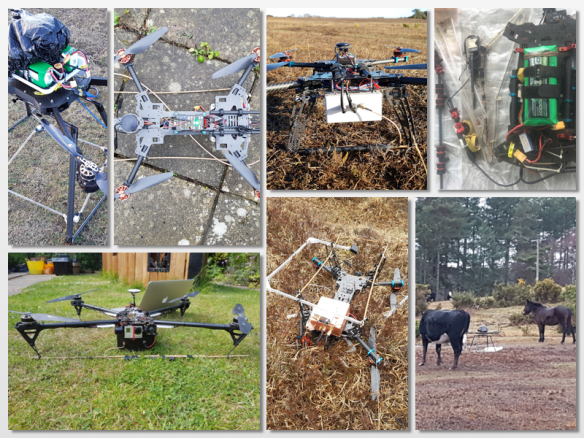Tracking Orangutans with Drones and Gnu-Radio #Conservation

Via the Machine Doing blog: Dirk writes a summary of a trip to Borneo in May this year with v2.0 of a drone-based orangutan tracking system, developed in partnership with International Animal Rescue (IAR).
Compared to my last visit, the v2.0 system was a lot better integrated. There was a dedicated payload box, cleaner wiring and a much larger and more capable drone (very kindly provided at reduced cost by Alex @ Vulcan UAV) with a Pixhawk2/APM flight controller. On the radio side I was still using a square loop but switched to an airspy mini & pre-amp combo instead of the RTL-SDR I was using originally.
On the code side:
The gnu-radio code was wrapped in python and a set of heuristics was used to filter the output of each of the approaches and generate a series of plots to report back to the user. This was done through a react.js web application (which also was largely rewritten) served through Flask and the drone’s own wifi hotspot. All of this running on an x86 UDoo board instead of the Odroid UX4 I had used previously.

The purpose of the drone is to detect orangutans with an implant so they can be located when lost. However, for the drone to have any purpose you need a reliable source of reliable implants. This is however not the case unfortunately. The original implants are expensive, unreliable, and have been shown to break & leak once inside the animal.
Hence, as a parallel thread over the past two years I engaged with a friendly RF engineering company who, long story short, have designed and manufactured a new implant. The new implant is functionally similar to the original one but to a more professional standard and safer once implanted. The first batch is undergoing testing as I type this. If all goes well, all orangutan rescue centres will now have a reliable and sustainable source of implants, and associated product roadmap.
With the implant situation stable this then allows focus to shift back to the drone and the road to v3.0.
Read the extensive description of the project here and check out one of the many videos below.
